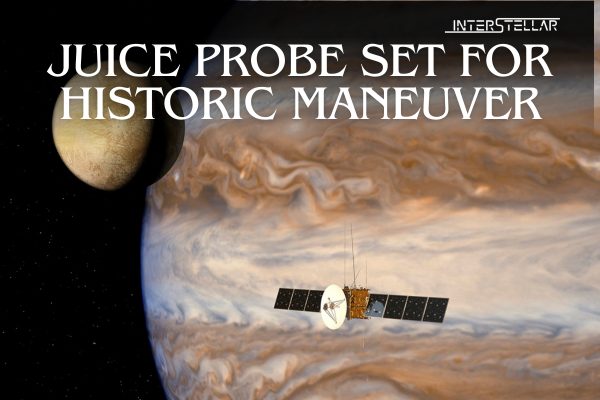European Scientists Attempt First-Ever Double Slingshot Maneuver to Propel JUICE Probe Towards Jupiter
European scientists are preparing for a groundbreaking mission, aiming to perform a first-of-its-kind double slingshot manoeuvre using the Moon and Earth to guide the JUICE probe towards Jupiter. This crucial step in orbital navigation could determine the success of the European Space Agency’s (ESA) ambitious eight-year journey to the gas giant and its icy moons.
The Double Slingshot: A Risky but Crucial Move
The European Space Agency’s Jupiter Icy Moons Explorer (JUICE) probe, launched just over a year ago, is on its way back towards Earth. The probe will perform an intricate double gravity-assist manoeuvre, first harnessing the Moon’s gravity and then Earth’s, to set itself on the correct path towards Venus and ultimately Jupiter.
This complex move is fraught with risk. The JUICE probe will first use the Moon’s gravity to adjust its trajectory towards Earth. Even the smallest error in this phase could be magnified during the second part of the manoeuvre, which involves using Earth’s gravity to slow down the spacecraft. A mistake here could jeopardise the entire mission.
Nicolas Altobelli, JUICE Mission Manager, acknowledged the difficulty of this task, stating, “Inherently this is a bit tricky, because you would need to correct any error, and you would need propellant for that.” The Airbus-built probe will pass just 750 km (465 miles) from the Moon’s surface, a precise calculation critical to the mission’s success.
Gravity Assist: A Tried and Tested Technique with a New Twist
The gravity-assist method has been a cornerstone of space exploration for decades, allowing spacecraft to save propellant by using the gravitational pull of planets or moons to alter speed and direction. However, the double slingshot manoeuvre planned for the JUICE mission is unprecedented.
If successful, the manoeuvre will set the JUICE probe on a course to reach Jupiter and its three large ocean-bearing moons—Callisto, Europa, and Ganymede—by 2031. To achieve this, JUICE will require three additional gravity assists: one from Venus in 2025, and two more from Earth in 2026 and 2029.
ESA scientists considered multiple routes to get JUICE to Jupiter without relying on an unrealistically large rocket. The decision to use the Moon’s gravity allowed the probe to catch Earth in front of its orbit around the Sun, effectively slowing it down and enabling the necessary trajectory adjustments. “It’s a very good configuration of the Moon’s position around the Earth … So we are being opportunistic,” Altobelli explained.
A Mission with Profound Implications
The JUICE mission builds on the legacy of NASA’s Galileo mission to Jupiter in the 1990s. The ESA-led project will orbit Jupiter, conduct fly-bys of its three large icy moons, and eventually orbit Ganymede to explore its potential for supporting life.
This mission could provide critical insights into the habitability of these moons. “It means studying the conditions and understanding whether those moons could be a potential habitat, and could have conditions favourable for life as we know it,” Altobelli said.
The success of this double slingshot manoeuvre is not just a technical achievement; it is a crucial step towards answering some of the most profound questions about our solar system and the potential for life beyond Earth.





